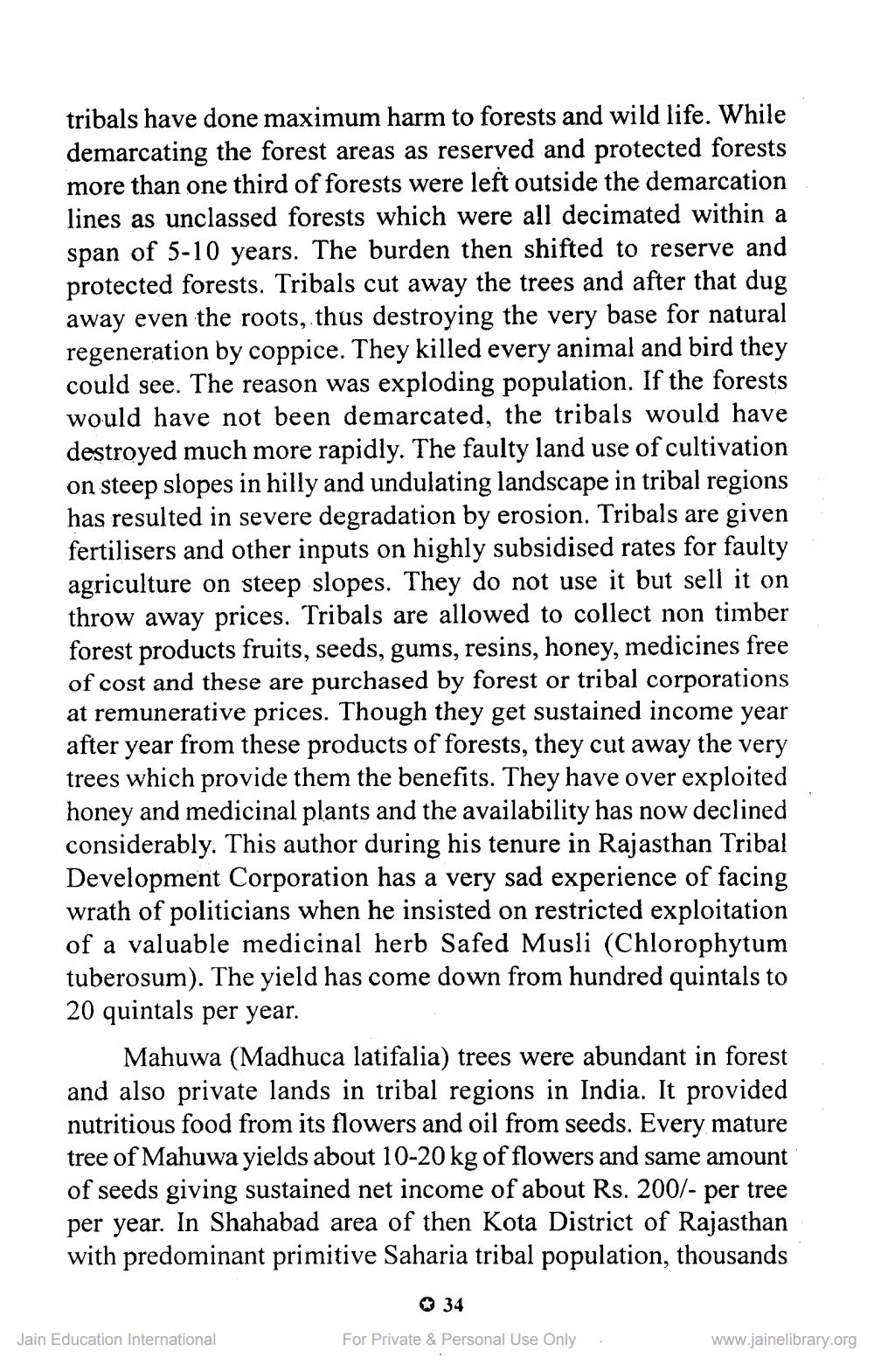________________
tribals have done maximum harm to forests and wild life. While demarcating the forest areas as reserved and protected forests more than one third of forests were left outside the demarcation lines as unclassed forests which were all decimated within a span of 5-10 years. The burden then shifted to reserve and protected forests. Tribals cut away the trees and after that dug away even the roots, thus destroying the very base for natural regeneration by coppice. They killed every animal and bird they could see. The reason was exploding population. If the forests would have not been demarcated, the tribals would have destroyed much more rapidly. The faulty land use of cultivation on steep slopes in hilly and undulating landscape in tribal regions has resulted in severe degradation by erosion. Tribals are given fertilisers and other inputs on highly subsidised rates for faulty agriculture on steep slopes. They do not use it but sell it on throw away prices. Tribals are allowed to collect non timber forest products fruits, seeds, gums, resins, honey, medicines free of cost and these are purchased by forest or tribal corporations at remunerative prices. Though they get sustained income year after year from these products of forests, they cut away the very trees which provide them the benefits. They have over exploited honey and medicinal plants and the availability has now declined considerably. This author during his tenure in Rajasthan Tribal Development Corporation has a very sad experience of facing wrath of politicians when he insisted on restricted exploitation of a valuable medicinal herb Safed Musli (Chlorophytum tuberosum). The yield has come down from hundred quintals to 20 quintals per year.
Mahuwa (Madhuca latifalia) trees were abundant in forest and also private lands in tribal regions in India. It provided nutritious food from its flowers and oil from seeds. Every mature tree of Mahuwa yields about 10-20 kg of flowers and same amount of seeds giving sustained net income of about Rs. 200/- per tree per year. In Shahabad area of then Kota District of Rajasthan with predominant primitive Saharia tribal population, thousands
Jain Education International
34
For Private & Personal Use Only
www.jainelibrary.org




